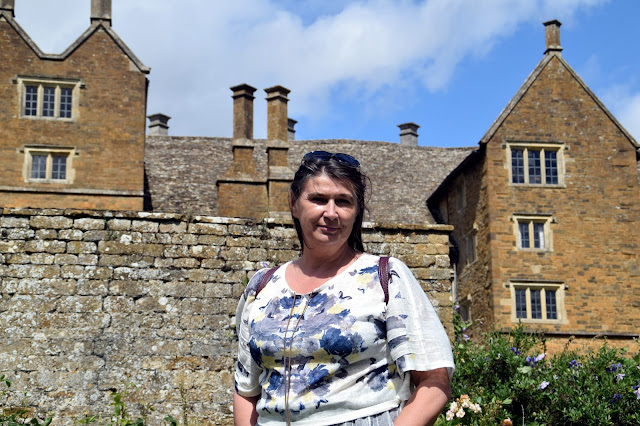Broughton
Castle is a moated and fortified manor house near Banbury in North
Oxfordshire. Set in parkland and built of the rich local Hornton
ironstone, it was selected by Simon Jenkins as one of only twenty to be
awarded five stars in his book England’s Thousand Best Houses.
The core of the house was built in 1306 and the gatehouse in the
early fifteenth century, but most of what you see today dates from the
1550’s. It was a centre of opposition to Charles I and was besieged and
damaged after the Battle of Edgehill in 1642.
Broughton Castle is home to the
21st Lord and Lady Saye & Sele, whose family name is Fiennes. The
ownership of the Castle has remained in the same family since 1447.
http://www.broughtoncastle.com/the-house/
 |
The Gatehouse
Sir
Thomas Wykeham was granted a “license to crenellate” in 1406 and these
fortifications – gatehouse, moat and the battlements of the curtain wall
– are the result. Sir Thomas had inherited Broughton Castle from his
great uncle William of Wykeham, the founder of New College, Oxford and
Winchester College who bought Broughton Castle in 1377. Their
descendants still live in the Castle.
|
 |
The Great Hall
The Great Hall was the heart of the original 14th century house. The windows were installed in the 16th
century, and the plaster ceiling is mid-18th century. William of
Wykeham’s portrait hangs above the fireplace, opposite that of William
Fiennes, the 1st Viscount Saye & Sele and a leading
figure in the opposition to Charles I. The Castle was a meeting place of
the leading Parliamentary opponents of Charles I including John Pym,
John Hampden, Lord Brooke and Lord Saye’s son Nathaniel Fiennes.
|
 |
The Dining Room
This room started off as the undercroft (perhaps combining the functions of storeroom and medieval kitchen) of the original 13th
century house. It is now the dining room, and still in regular use as
such. The double linenfold panelling dates from the mid-16th century.
|
 |
Queen Anne’s
Room
Named
after Anne of Denmark, wife of James I, mother of Charles I, she stayed
here with her eldest son Prince Henry in 1608. Her portrait hangs above
the fireplace. From this room a squint allows a view down into the
Chapel. The fireplace is from about 1554.
|
 |
The Gallery
First
added as part of the mid-16th century work, and then remodelled in the
Gothick style in the 1760’s, and redecorated in 1970. Family portraits
from the 16th century through to the 19th century hang along the Gallery
walls. The carpet was made especially for the film Three Men and a Little Lady in 1990, and given to the house by the production company.
|
 |
The King’s
Chamber
James
I in 1604 and Edward VII in 1901, when Prince of Wales, stayed in this
room. The bed is 1992, the wallpaper hand-painted from China in about
1800, and the magnificent plaster fireplace is from the 1550’s – similar
work is to be found at the palace of Fontainbleau in France |
 |
The Oak Room
Part
of the major additions of the mid-16th century. This panelled drawing
room also has a notable oak interior porch put up by William, the 1st
Viscount with a quotation reflecting on the end of the English Civil
War and the ensuing political instability. The picture above the
fireplace is of Charles II leaving exile in the Netherlands to return
for the Restoration in 1660. The room has featured in a number of films
including Jane Eyre (2011) and Shakespeare in Love (1998).
|








































No comments:
Post a Comment